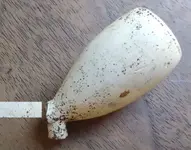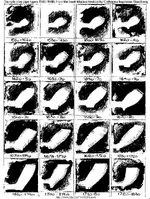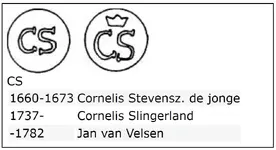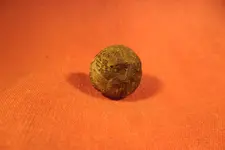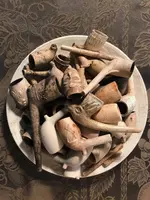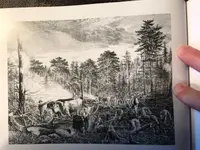What a nice find. I can’t offer any explanation for why it was found on the surface covered only by some leaves but everything about that pipe says late 17th Century, with the white kaolin and the crown in the maker’s mark indicating it to be a European import. I’m open to being shot down, but here’s my views…
I have flipped and oriented your picture with the heel in the resting position and added a stem to show what the profile would have been:
View attachment 2054729
Note the extreme slope of the bowl away from the stem. That’s really not something you see on pipes after the end of the 17th Century. The bowl size for pipes also progressively increased as tobacco became less expensive, so very early pipes have tiny bowls and later ones range up to massive. Yours is about ¾ inch diameter, so late 1600s would be consistent with that. You’ll find multiple charts on the net giving date ranges for various bowl profiles/sizes. They don’t all agree with one another and can be subject to a significant +/- beyond the suggested ranges but compare yours to the one at the end of the third row on this chart, broadly assigned to the period 1670-1690:
View attachment 2054730
I believe this is a Dutch pipe and there are several possible makers based in the pipe-making centre of Gouda who used a ‘CS’ heel mark in various lettering styles, both with and without a crown above. These were:
Cornelis Stevensz. de Jonge (ie the younger) [1660-1673]
Cornelis Slingerland [1737-c1742 and possibly later]
Jan van Velsen [1782-c1805]
View attachment 2054731
[Ref: “Goudse pijpenmakers en hun merken” by J. van der Meulen]
The style is not consistent with 18th/19th Century dates for van Velsen, so I think it’s one of the others and my gut feel is for Cornelis Stevensz with the 1660-1673 dates. I’m still left uncomfortable with the find circumstances for a pipe that early though.




 .
.


